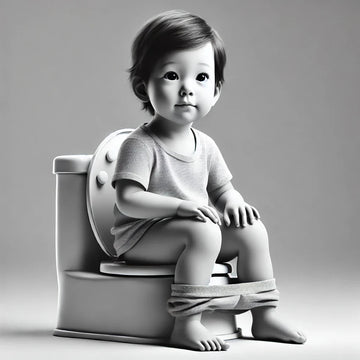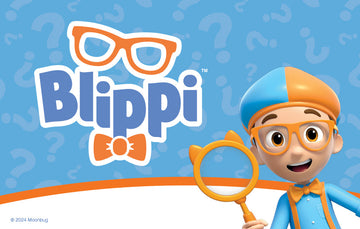Potty training is a significant milestone in a child's development, and it is a crucial aspect of their growth. However, determining when your child is ready for potty training can be a challenging task for many parents. Knowing the signs that indicate your child is ready for potty training can make the process smoother and more successful.
In this article, we will discuss five signs that indicate your child is ready for potty training. By recognizing these signs, you can help your child transition from diapers to using the toilet with ease. Understanding your child's readiness for potty training is essential to ensure that the process is not stressful or overwhelming for them. With the right approach and timing, potty training can be a positive experience for both parents and children.
1) Dry Diapers for Longer Periods
One of the most significant signs that a child is ready for potty training is when they can keep their diapers dry for more extended periods. This means that the child can hold their urine for an extended period, indicating that their bladder muscles are developing and getting stronger.
Parents can start observing their child's diaper use to see if they can keep their diapers dry for at least two hours or more. If a child can stay dry for more extended periods, it is a good indication that they are ready for potty training.
It is important to note that accidents can still happen, and parents should not expect their child to be perfect from the beginning. However, if a child can stay dry for longer periods, it is a good sign that they are starting to develop the necessary control over their bladder muscles.
Parents can encourage their child to use the potty by setting up a routine and reminding them to use the bathroom regularly. Positive reinforcement, such as praise and rewards, can also be helpful in encouraging a child to use the potty.
In summary, if a child can keep their diapers dry for more extended periods, it is a good indication that they are ready for potty training. Parents can encourage their child to use the potty by setting up a routine and using positive reinforcement.
2) Showing Interest in the Bathroom
One of the most significant signs that your child is ready for potty training is when they start showing interest in the bathroom. This interest may come in the form of watching you or their siblings use the bathroom or asking questions about what you are doing.
Children who are ready for potty training may even start to imitate the behaviors they see in the bathroom, such as pulling down their pants or sitting on a small potty chair. They may also start to communicate their bathroom needs to you, either by verbalizing or through gestures.
It's essential to pay attention to these cues and encourage your child's interest in the bathroom. You can start by explaining the process of using the toilet, including how to wipe and wash hands. You can also let your child pick out their own potty chair or seat, which can help them feel more comfortable and invested in the process.
Overall, showing interest in the bathroom is a positive indication that your child is ready for potty training. By encouraging their curiosity and providing support, you can help them successfully transition to using the toilet independently.
3) Disliking Dirty Diapers
One of the most significant signs that your child is ready for potty training is when they start showing a dislike for dirty diapers. This is because your child has developed an awareness of their bodily functions and is beginning to understand the connection between the urge to go and the need to use the potty.
When your child is ready for potty training, they will start to show signs of discomfort when they have a dirty diaper. They may even try to remove the diaper themselves, indicating that they are aware of the discomfort caused by a soiled diaper.
It is important to note that this sign alone does not necessarily mean that your child is fully ready for potty training. It is just one of the many signs to look out for. However, when combined with other signs, it can indicate that your child is ready to start the potty training process.
If your child is displaying a dislike for dirty diapers, it is a good idea to start introducing the concept of using the potty to them. This can be done by encouraging them to sit on the potty and explaining to them what it is for. By doing so, you can help them understand the connection between the urge to go and the need to use the potty.
4) Following Simple Instructions
Another sign that your child may be ready for potty training is their ability to follow simple instructions. This means that they can understand and carry out basic commands such as "sit down" or "come here."
If your child is able to follow simple instructions, it shows that they have developed some level of cognitive and language skills. This is important because potty training requires the child to understand and communicate their needs effectively.
You can test your child's ability to follow instructions by giving them simple tasks such as picking up a toy or putting on their shoes. If they are able to do so without much difficulty, it may be a good indication that they are ready for potty training.
However, keep in mind that every child develops at their own pace. Some children may be able to follow instructions earlier than others, while some may take longer. It's important to be patient and not rush the process.
In summary, if your child is able to follow simple instructions, it may be a sign that they are ready for potty training. However, it's important to remember that every child is different and may develop at their own pace.
5) Staying Dry Through Naps
Another sign that your child is ready for potty training is when they start to stay dry during naps. This means that they are developing better bladder control and are able to hold their urine for longer periods of time.
It's important to note that this may not happen right away and may take some time for your child to achieve. You may need to continue using diapers or pull-ups during nap time for a little while longer until they are consistently staying dry.
However, once your child is staying dry through naps, it's a good indication that they are ready to start potty training during the day. Make sure to encourage them to use the potty before nap time and right after waking up from a nap to help establish good habits.
Remember to be patient and supportive during this process. Every child is different and will progress at their own pace. With time and practice, your child will become a pro at using the potty and staying dry throughout the day and night.
Understanding Potty Training Readiness
Physical Readiness
Before starting potty training, it is important to ensure that your child is physically ready. This means that they have developed the necessary physical skills to control their bladder and bowel movements. Some signs of physical readiness include:
- Your child stays dry for at least two hours at a time
- Your child has regular bowel movements
- Your child can pull their pants up and down on their own
- Your child can walk and sit down on a potty chair or toilet seat
It is important to note that every child is different and may develop these skills at different rates. It is important to wait until your child is physically ready before starting potty training to ensure a successful and positive experience.
Emotional Readiness
In addition to physical readiness, it is also important to consider your child's emotional readiness for potty training. This means that they are ready to take on the responsibility and understand the process. Some signs of emotional readiness include:
- Your child expresses interest in using the potty
- Your child can communicate their needs and understand simple instructions
- Your child is willing to sit on the potty chair or toilet seat
- Your child is able to understand the concept of cause and effect
It is important to wait until your child is emotionally ready before starting potty training to prevent frustration or setbacks. Remember to be patient and supportive throughout the process, as every child learns at their own pace.
Creating a Positive Potty Training Environment
Choosing the Right Potty
When it comes to potty training, choosing the right potty can make all the difference. Parents should look for a potty that is comfortable, easy to clean, and fits their child's size. It's also important to choose a potty that is appealing to the child. Some children may prefer a potty with their favorite cartoon character or bright colors. Parents should also consider whether they want a standalone potty or a potty seat that attaches to the toilet.
Establishing a Routine
Establishing a routine is key to creating a positive potty training environment. Parents should set a consistent schedule for taking their child to the potty, such as after meals or at regular intervals throughout the day. It's also important to praise and encourage the child for successful potty trips, even if they don't actually go. This positive reinforcement can help motivate the child and make potty training a more positive experience.
By choosing the right potty and establishing a routine, parents can create a positive potty training environment that helps their child feel comfortable and confident. Remember, every child is different, so it's important to be patient and flexible throughout the process.





